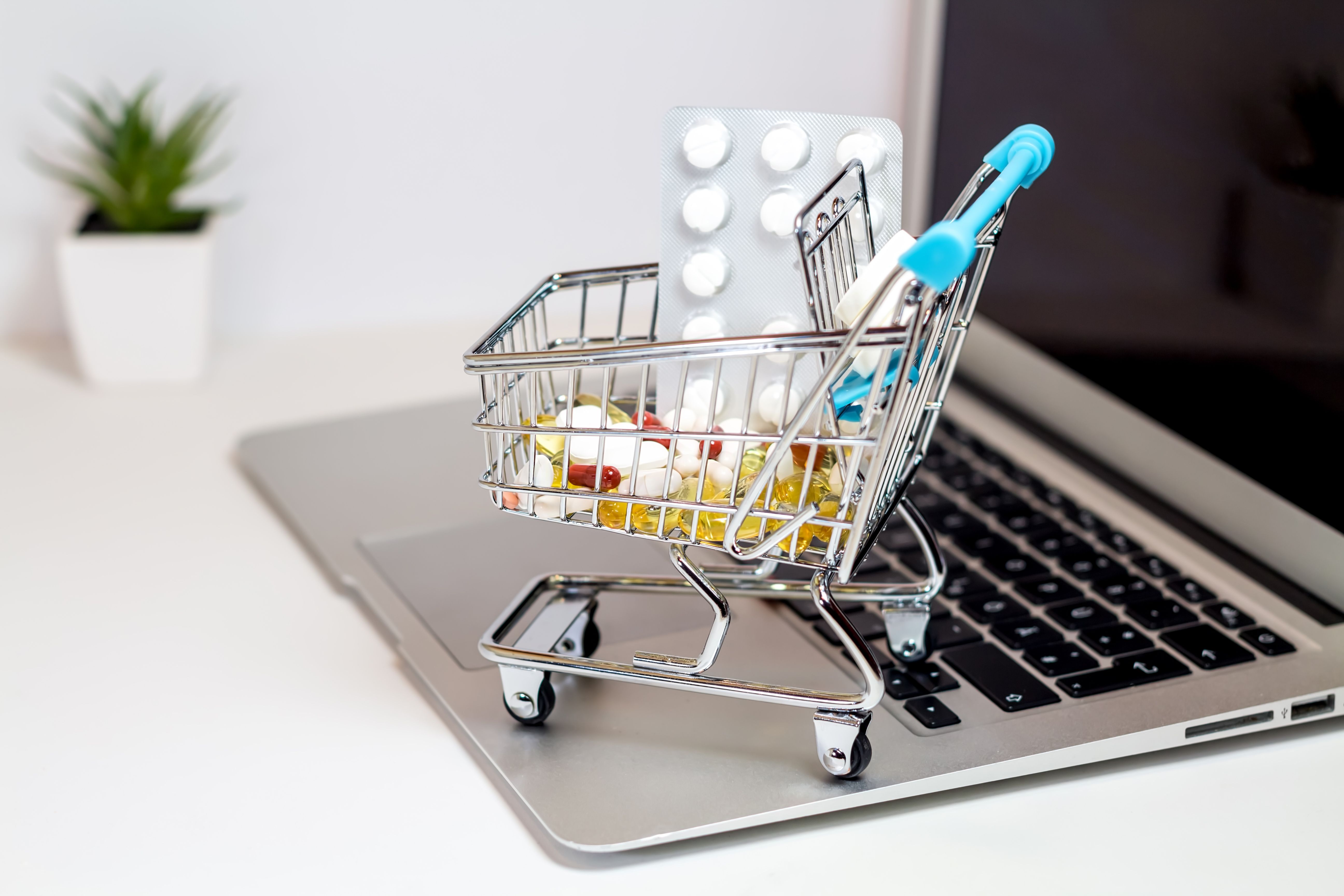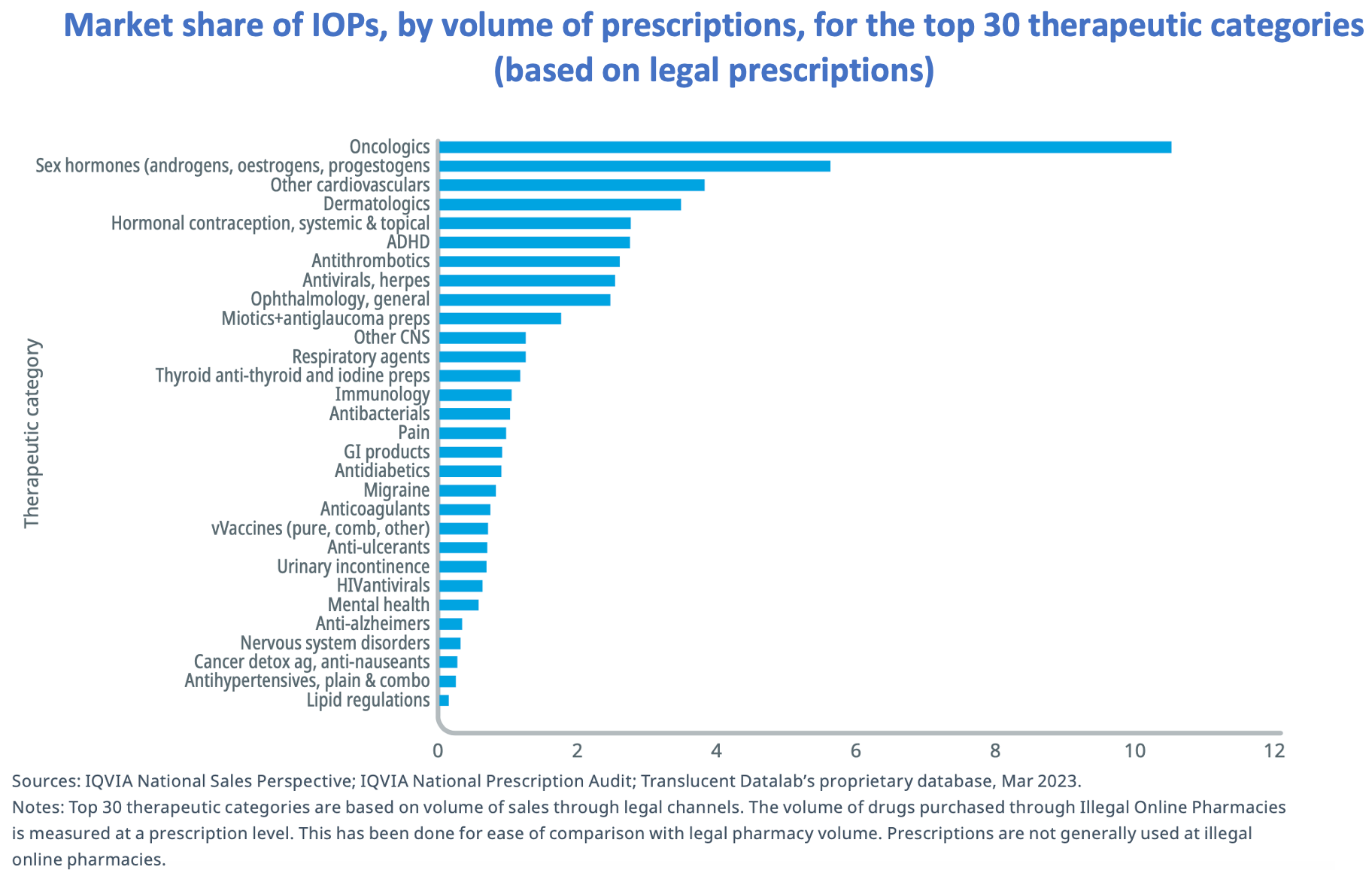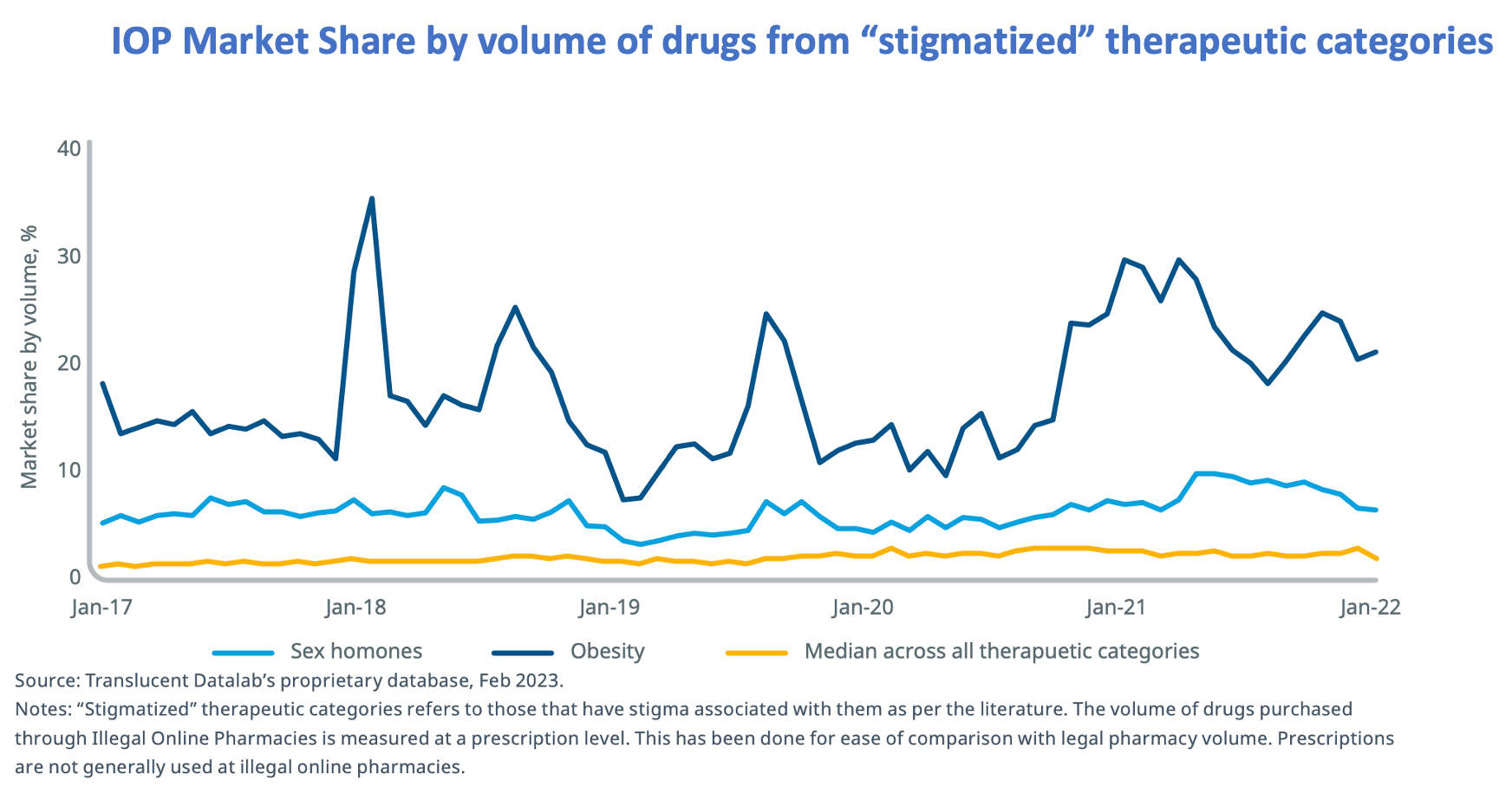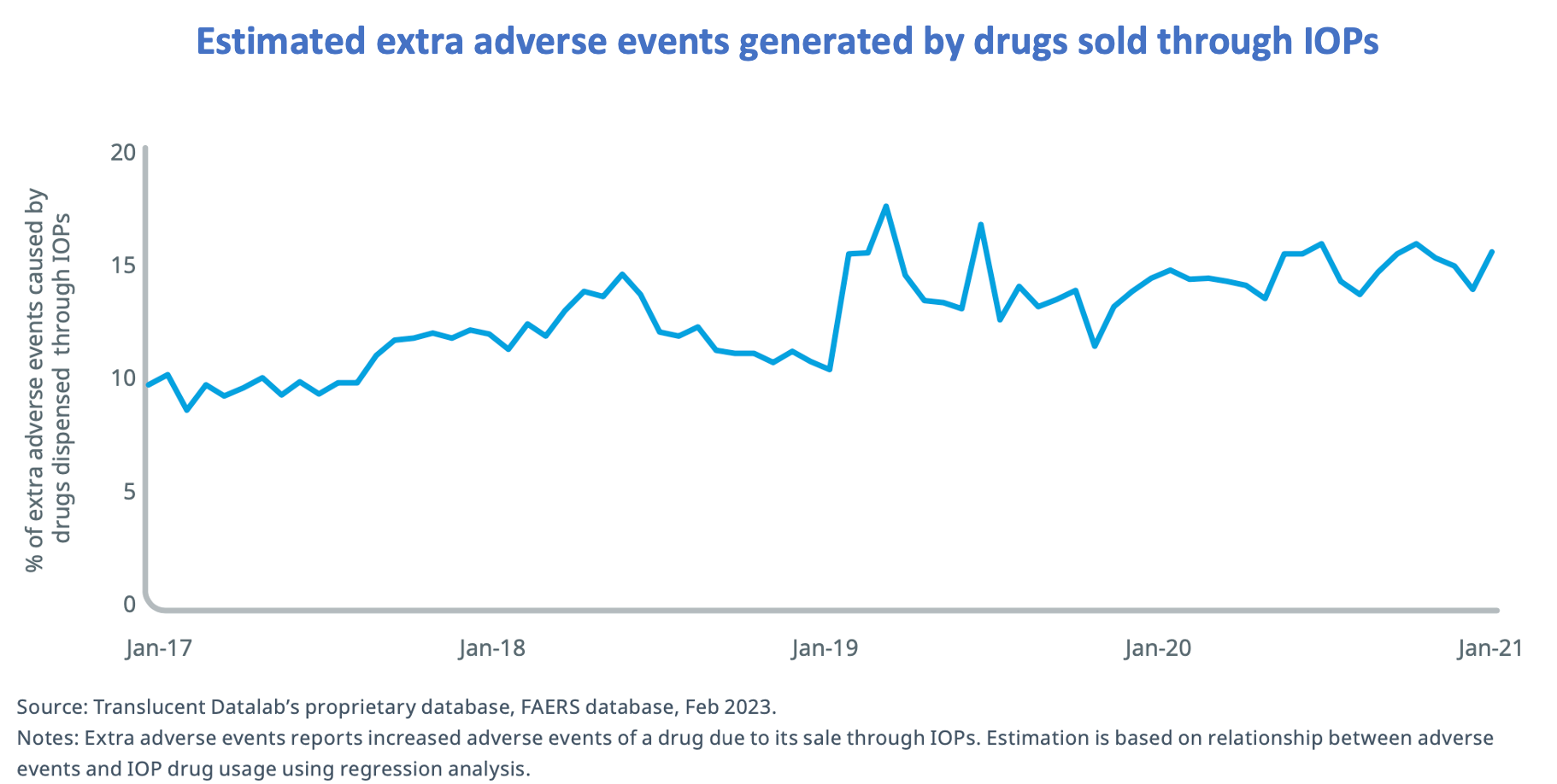Article
Illegal Online Pharmacies Are Putting Patients at Risk
Author(s):
The growing volume of drugs sold through illegal online pharmacies are estimated to generate 10 times higher adverse event rates than drugs sold through legal pharmacies.
The sale of prescription medicines through illegal online pharmacies (IOPs) in the United States is increasing. Between 2019 and 2022, the volume of medicines dispensed annually through IOPs increased from the equivalent of 64 million to 85 million prescriptions, at a compounded annual growth rate of 10%. In 2022, prescription drugs worth an estimated $34 billion were purchased from IOPs.
Credit: MysteryShot - stock.adobe.com

The public health impact of the illegal online sale of drugs is significant. Drugs sold through IOPs are estimated to generate 10 times higher adverse event (AE) rates than drugs sold through legal pharmacies, which results in an estimated 12.6% total extra AEs in the United States being associated with drugs purchased through illegal online pharmacies.
There are also economic consequences of the illegal online sale of prescriptions drugs. These AEs represent an estimated additional $67 billion cost for the US health care system, in addition to the health care consequences for patients.
These are among the key findings from a recent report from the IQVIA Institute for Human Data Science Assessing the Impact of Illegal Online Pharmacies in the U.S. Sales, Volume and Adverse Events.
The report draws from research based on a novel methodology developed by the IE University (International University in Spain) and commercialized by Translucent Datalab, a spin-off from IE University, to profile the network of IOPs that are being accessed from the United States and used to order prescription medicines.The methodology uses web scraping and deep learning algorithms in combination with IQVIA’s prescription data to expand the existing knowledge of IOPs.
What are illegal online pharmacies?
The sale of prescription drugs in the United States is regulated by a comprehensive set of federal and state laws. Illegal pharmacies are those that operate without the requisite valid licenses or supply drugs manufactured in foreign facilities that are not subject to oversight or monitoring by the FDA. Illegal online pharmacies that are the focus of this research conduct their business through web sites, and exclude the dark web or social media. The IOPs provide the prescriptions drugs directly to patients without the required prescription from a physician.
The analysis estimates that there were 19,013 IOPs (15,501 active and 3512 inactive) as of March 2023. The active IOPs are typically networked in clusters of varying structure and size, reflecting an organized and systematic approach to their establishment and operation. A large majority of IOP domains are located in China, the United States, the Netherlands, and Russia.
Drugs equivalent to an estimated total of 416 million prescriptions were provided to patients by IOPs between January 2017 and December 2022, which represented 1.6% of the total prescriptions dispensed from both illegal online and legal pharmacies in the United States. Between 2019 and 2022, the number of prescriptions dispensed annually through IOPs increased from 64 million to 85 million at a compounded annual growth rate of 10%.
Cancer drugs and hormonal drugs top the list
Out of the top 30 therapeutic categories, those with the highest volume share being sold through IOPs included drugs used as part of cancer treatment (including hormone therapies), at 10.4% of total volume; sex hormones 5.5%; dermatologics 3.4%; other cardiovascular drugs (including those used for erectile dysfunction) 3.7%; hormonal contraception, systemic and topical 2.7%; and ADHD 2.7% (Figure 1).

Perceptions of lower prices, off-label use, and stigma drive consumer behavior
The major drivers of those Americans who purchase prescription drugs through IOPs appear to be perceived lower prices, off-label use (i.e., use of drug for purposes other than that approved by the FDA), and privacy. In the case of price, buyer perception of lower prices from IOPs are not always matched by actual prices available through legal channels.
For example, across a sample of 25 drugs, 20 were being sold by IOPs at a lower price than the average out-of-pocket costs for cash method of payment, with discounts ranging from 10% to 95%, while 5 drugs carried higher average prices at the IOP. Similarly, 12 out of 25 drugs had a lower price on the IOP websites compared to prices on NABP accredited online pharmacies with discounts ranging from 7% to 88%, while the other 13 drugs were priced higher on the IOP web sites.
Purchasing of drugs for potential off-label use was seen in the case of hydroxychloroquine, which was potentially being used for COVID-19 treatment despite not being approved for this purpose and witnessed a substantial increase in IOP purchasing when COVID-19 cases spiked. Drugs prescribed for hormonal therapy for patients with cancer are also potentially acquired through IOPs for off-label use.
Certain diseases categories, such as obesity and sex hormones, have a well-documented history of stigma associated with them. This stigma can lead to an unwillingness by patients to engage with medical professionals and may drive them to IOPs, which offer a degree of privacy. The data on drug purchasing through IOPs suggest that drugs that treat “stigmatized” diseases have higher IOP market share compared to the median across all therapeutic categories (Figure 2).

Public health impact of IOPs
Based on a regression analysis to evaluate the relationship between legal and illegal sales and AEs, drugs sold through IOPs are estimated to generate 10 times higher AE rates than drugs sold through legal pharmacies.
Overall, the average extra AEs during Jan 2017 and December 2022 period was 12.6%, which means 12.6% of the total AEs could have been avoided if all drugs purchased from IOPs had been purchased from legal pharmacies. Figure 3 shows the evolution of extra AEs between January 2017 and August 2022. The extra AEs grew from 9.7% in January 2017 to 15.3% in December 2022, showing an 8% compound annual growth rate (Figure 3).

These AEs represent an estimated additional $67 billion annual cost for the US health care system, in addition to the health care consequences for patients.
Economic impact of IOPs
Assuming the drugs purchased through IOPs were sold legally in the United States, the average annual economic value of these drugs between 2017 and 2022, using invoice level prices, is $28 billion, and aggregate value for the past 6 years totals $167 billion. This potential value loss has seen a substantial increase between 2017 and 2022, rising from $16 billion to $34 billion.
This economic value is not being realized by legal channels and impacts participants across the value chain, including manufacturers, wholesalers, retailers, specialty pharmacies, and other stakeholders. These losses represent 3.9% of the pharmaceutical industry’s total revenue in January 2017 and 6.3% of the industry’s total revenue in December 2022.
Out of the top 30 therapeutic categories, the highest lost value due to IOPs between 2017 and 2022 included drugs used as part of cancer treatment (including hormone therapies) ($14.6 billion), mental health drugs ($9.3 billion), dermatologics ($7.8 billion), ADHD drugs ($7.8 billion) antidiabetics ($6.6 billion), and other CNS medicines ($5.3 billion) (Figure 4).

Efforts to limit the sale of drugs from illegal online pharmacies
Multiple on-going efforts to stop illegal online pharmacies are underway with stakeholders such as international and US regulatory agencies, law enforcement, national associations, and nonprofit organizations involved.
Efforts to reduce or minimize IOP activity have included demand-based approaches, such as consumer education, and supply based approaches, such as regulatory oversight and legislation.
Warnings letters sent by the FDA to IOPs have had a temporary effect on traffic to the IOPs, with this traffic falling by 44% over the first 15 months after the warning letter was issued before rebounding back to the initial level over the next 6 months.
Between 2019 and 2022, the FDA mentioned a total of 29 drugs across 53 warning letters with tramadol, an opioid analgesic, appearing the greatest number of times in the warning letters.
There is a need for continued focus and commitment from multiple stakeholders within regulatory, law enforcement, consumer education, and technology solutions spaces to ensure demand and supply of drugs from IOPs is severely limited.
About the Authors
Murray Aitken, executive director, IQVIA Institute for Human Data Science.
Professor Luis Diestre Martin, IE Business School, CEO, Translucent DataLab.
Newsletter
Stay informed on drug updates, treatment guidelines, and pharmacy practice trends—subscribe to Pharmacy Times for weekly clinical insights.






